The Woods, a project by Solterra Systems and Design for Occupancy Architecture, has received its first review by the Design Commission. The proposed 6 story building will include 50 residential unit, a 2,151 sq ft retail space on the ground floor and a potential 521 sq ft retail space on the second floor. Stacked parking for 13 vehicles is proposed.
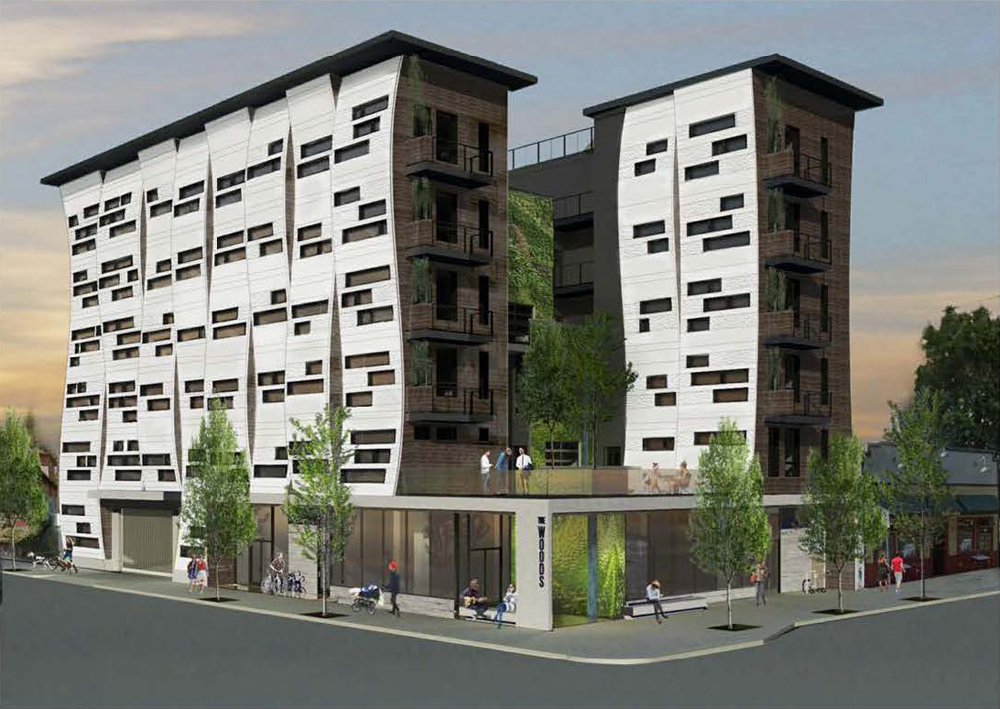
The project is proposed for a vacant site at the corner of N Williams Ave and N Fargo St. The Cook Street Lofts are currently under construction on the same block, and the Cook Street Apartments are under construction one block to the north.
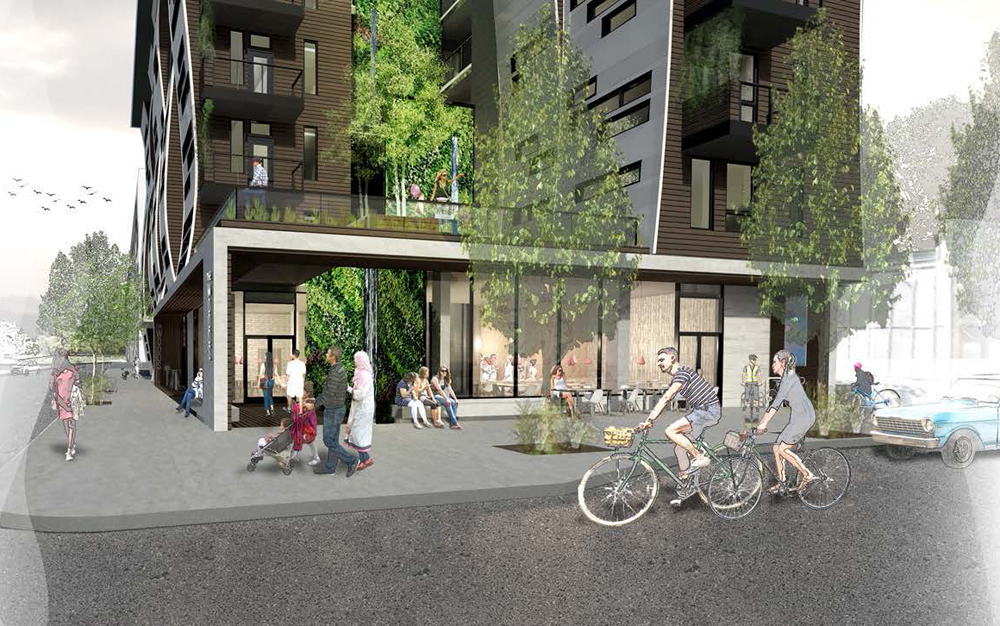
The building designed is intended to reconnect its residents to nature, with a “U” shaped plan inspired by Oneonta Gorge. A 5 story green wall will rise from a second story exterior courtyard, with an integrated waterfall cascading down from the roof. The roof terrace at the top of the building will include raised planters and an ecoroof.
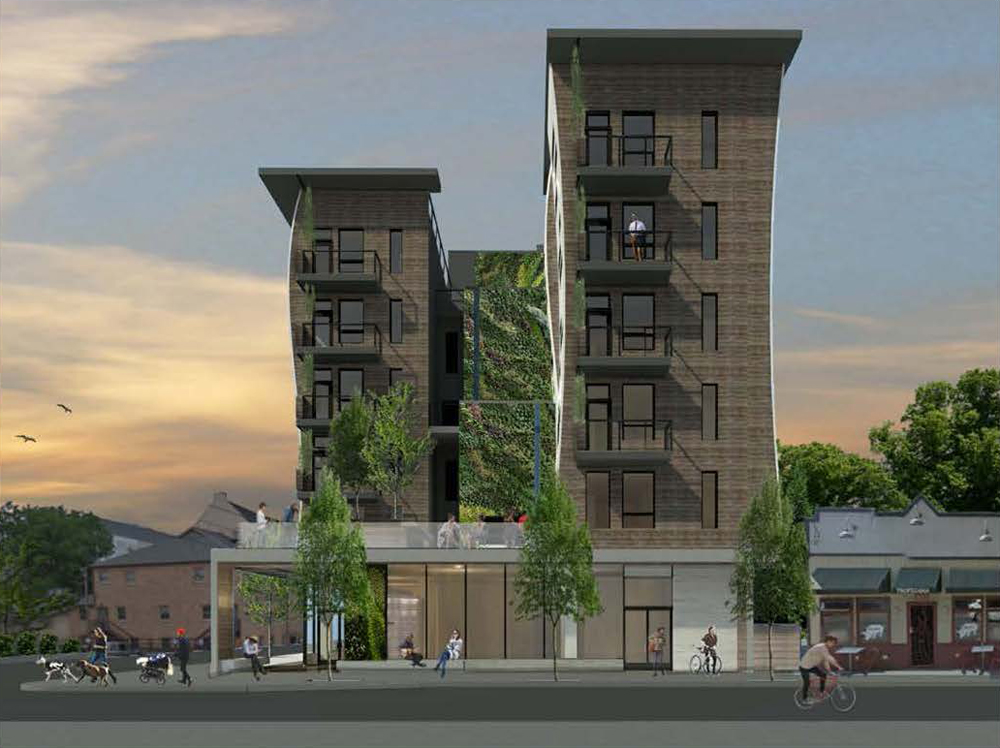
The primary material at the east and west elevations will be bamboo rainscreen cladding. The walls at the north and south of the building will curve in section, and are intended to be coated with stucco. Commercial grade vinyl windows are proposed for the residential units, with aluminum storefront windows proposed at the ground level.
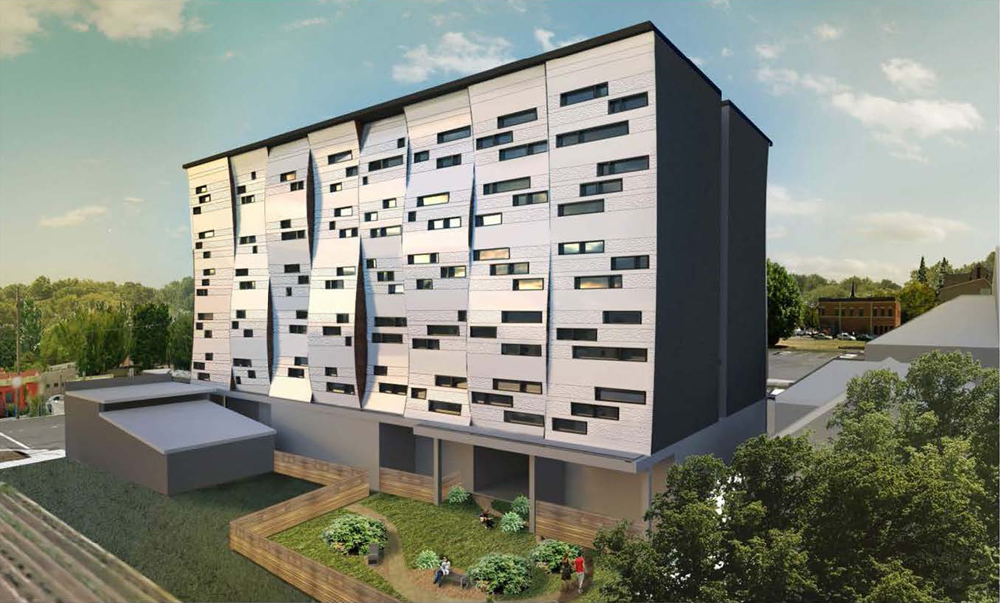
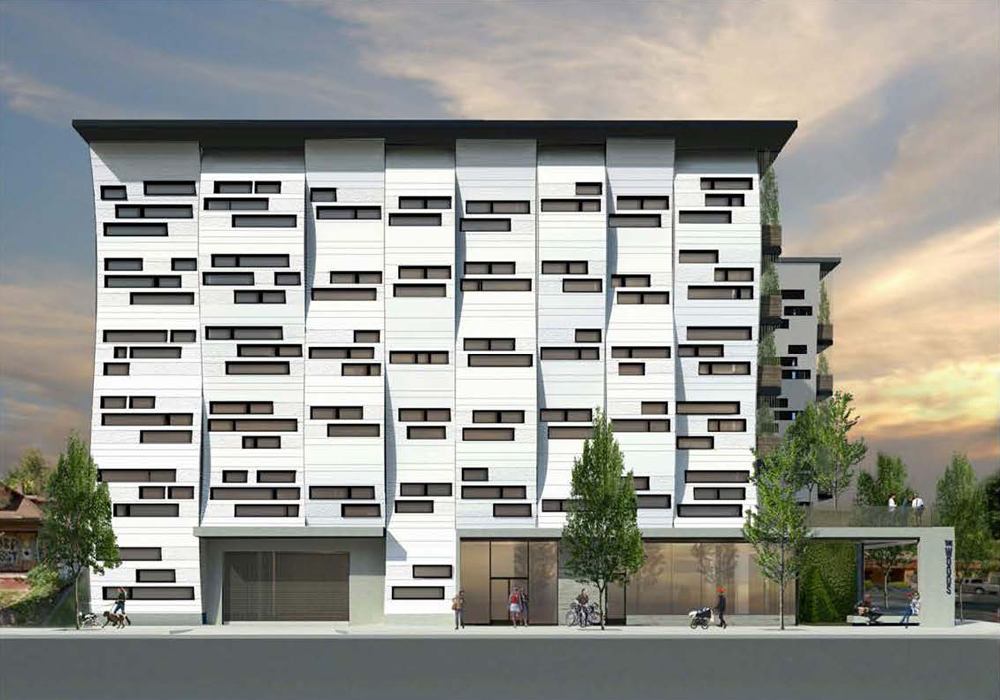
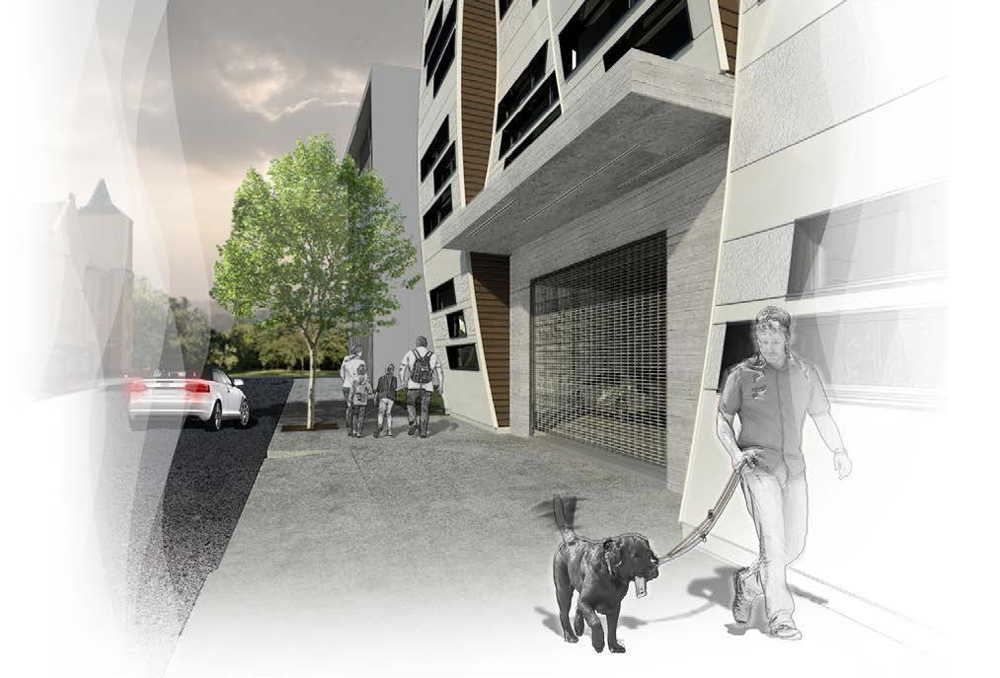
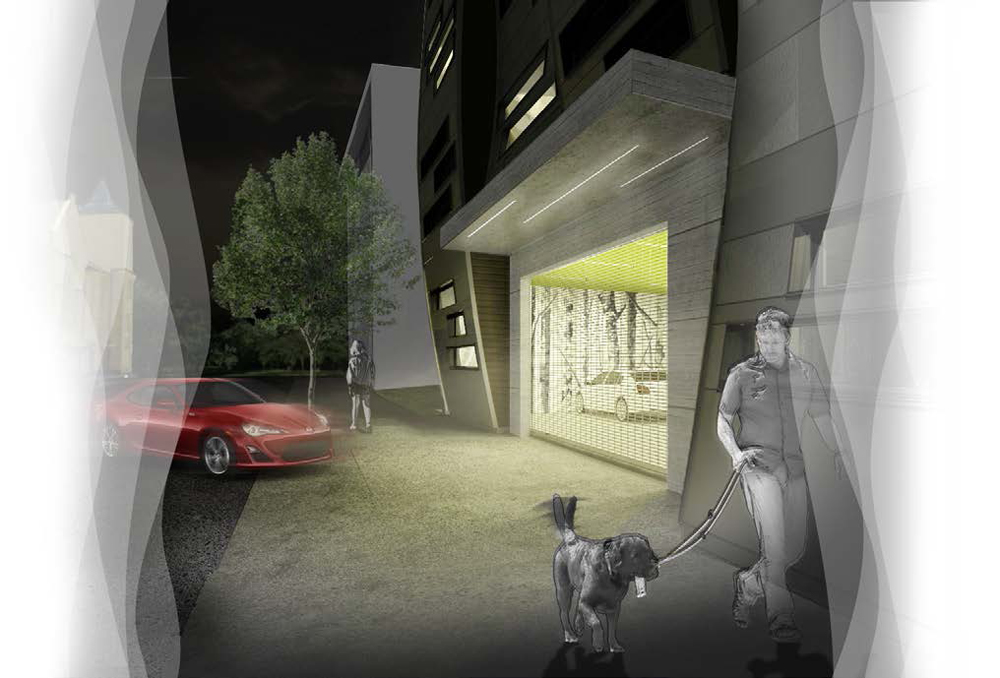
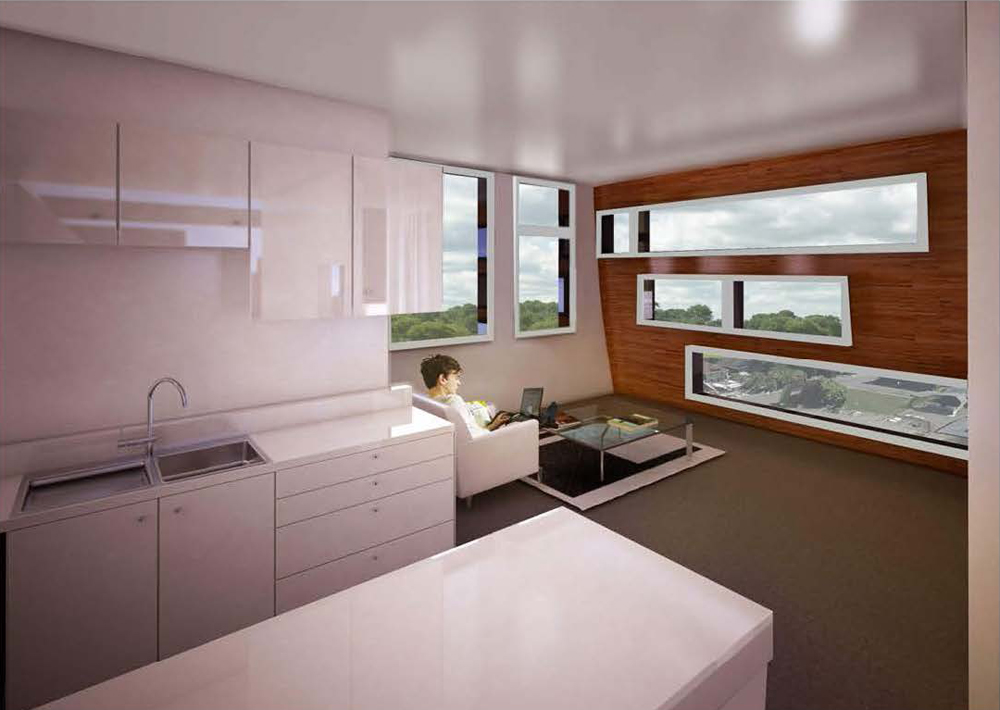
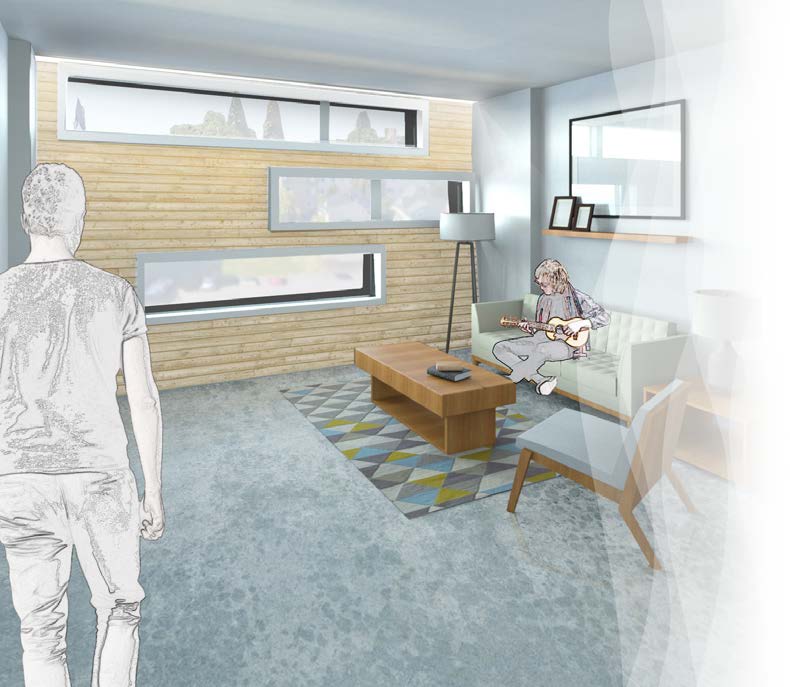
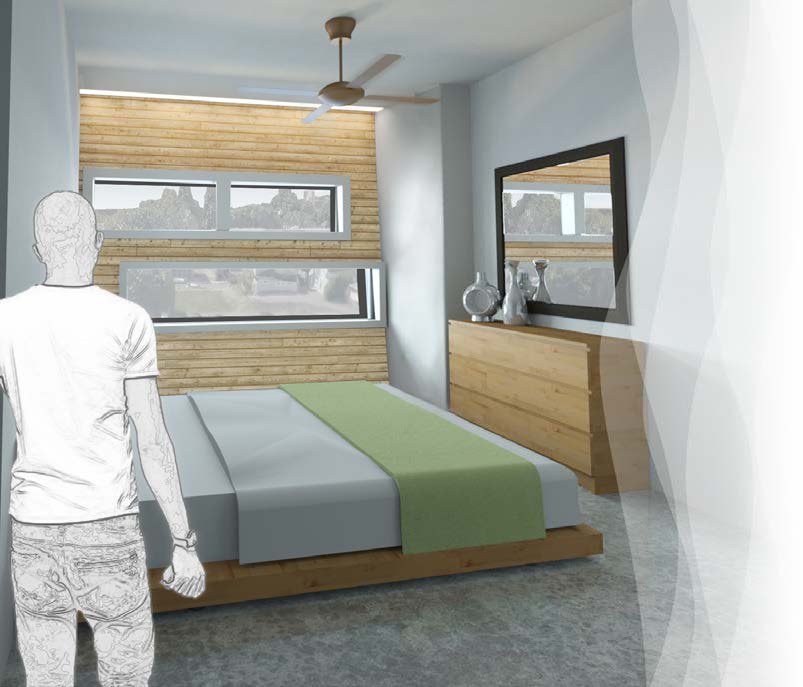
The project was originally submitted for Design Review in October 2014. Due its location the initial decision was made by Bureau of Development Services staff. A Notice of a Type II Decision [PDF] was published in June 2015, denying the application. While the decision found that many of the approval criteria had been met, it concluded that there were still issues to be resolved:
The Williams-Vancouver has seen significant change in recent years. While the additional density was envisioned by the Albina Community Plan, large scale projects such as this still seem somewhat out of place. As such, staff desires to ensure the highest quality development so that the neighborhood can look upon the changing environment with a sense of pride and welcoming. The proposed building is certainly ambitious and somewhat novel and thus demands the highest quality materials and detailing to ensure its longevity and success. As noted in the findings above, staff still has concerns regarding the quality of the design detailing, particularly at the curved walls and windows and the garage door, as well as concerns regarding the proposed use of the second floor retail/common area as it appears to be unresolved and potentially does not meet the guideline requiring pedestrian accessible entrances. Therefore, while the proposal meets most of the approval criteria, staff finds that the following guidelines are not yet met:
- D2 Main Entrances
- D4 Parking Areas and Garages
- D8 Interest, Quality, and Composition
The design review process exists to promote the conservation, enhancement, and continued vitality of areas of the City with special scenic, architectural, or cultural value. The proposal does not meet all of the applicable design guidelines therefore approval is not warranted.
The denial was appealed to the Design Commission, who reviewed the project at a public hearing for the first time on July 9th 2015. A second Design Review hearing is currently scheduled for August 6th.
Plans, Sections and Elevations
- Plan – Ground
- Plan – 2nd Floor
- Plan – 3rd Floor
- Plan – 4th Floor
- Plan – 5th Floor
- Plan – 6th Floor
- Plan – Roof
- Section
- Section
- Section
- Section
- Elevation – East
- Elevation – South
- Elevation – North
- Elevation – West
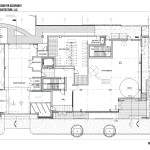
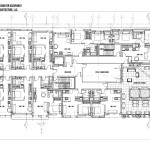
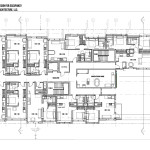
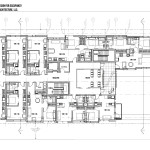
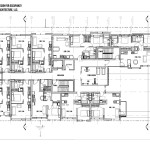
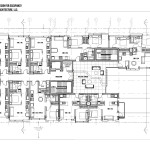
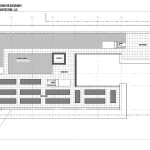
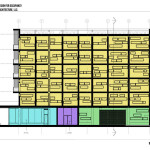
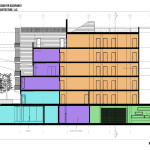
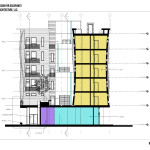
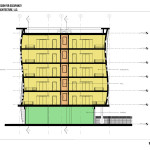
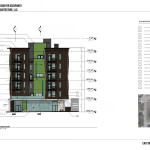
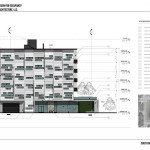
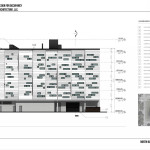
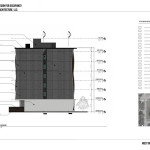
It’s only sustainable if it’s affordable. If it’s not, then your headline is a lie, and so is the promotional blather.
I’m always curious when people say they want ‘affordable’ housing units. Do they mean “low cost to rent” in a general sense? Or doe they mean “publicly subsidized income-restricted units that only people making below the poverty line can quality for”? The latter is how the government defines affordable housing.
I to also important to consider the affordability over time. The low cost to rent apartments in the city of Portland today were built in the 20-70s … At one point, those apartments were new and shiny and expensive. Just as the new housing of 1970 has become the low cost housing of 2015, these new units, if not low cost today, will become low cost in the future.
I can’t decide if it looks more like a dystopian prison or something a Transformer vomited up.
Dystopian prison sums it up.
Let’s have curved walls! Whoops, that didn’t work out so now let’s have a lawsuit and scaffolding surrounding the building 18 months after the tenants move in, right about the time the theater is converted to bike storage. And if someone is living on an upper floor wants a view they get to constantly crane their neck/move about to see out those terrible windows. Phew, I feel better now!